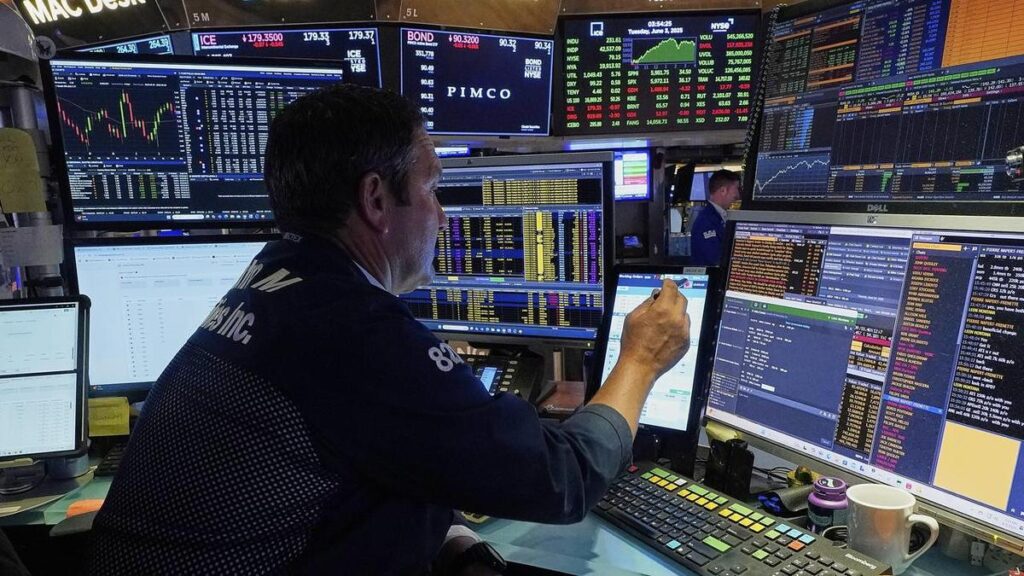US stocks have edged higher as strength in technology shares offset declines driven by weak economic data that deepened concerns about the effects of trade policies from US President Donald Trump’s administration.
The US services sector contracted for the first time in nearly a year in May while businesses paid higher input prices, a reminder that the economy was still at risk of experiencing a period of very slow growth and high inflation.
The ADP National Employment Report showed US private employers added the fewest number of workers in more than two years in May.
Investors are awaiting Friday’s non-farm payrolls data for more signs on how trade uncertainty is affecting the US labour market.
“I think you get very short term volatility from the ADP number but I don’t think that it means that much until we see the payrolls number,” said Larry Tentarelli, chief technical strategist at Blue Chip Daily Trend Report.
The United States doubled tariffs on imported steel and aluminium to 50 per cent on Wednesday, the same day by which Trump wanted trading partners to make their best offers to avoid other punishing import levies from taking effect in early July.
Investor focus is squarely on tariff negotiations between the US and its trading partners, with Trump and Chinese leader Xi Jinping expected to speak sometime this week as tensions simmer between governments of the world’s two biggest economies.
May was the best month for the S&P 500 index and the tech-heavy Nasdaq since November 2023, thanks to a softening of Trump’s harsh trade stance and upbeat earnings reports.
The S&P 500 remains less than 3.0 per cent away from its record highs touched in February.
Barclays joined a slew of other brokerages in raising its year-end price target for the S&P 500, pointing to easing trade uncertainty and expectations of normalised earnings growth in 2026.
In early trading on Wednesdsay, the Dow Jones Industrial Average rose 88.09 points, or 0.20 per cent, to 42,605.07, the S&P 500 gained 17.36 points, or 0.29 per cent, to 5,987.73 and the Nasdaq Composite gained 58.41 points, or 0.31 per cent, to 19,459.09.
Eight of the 11 major S&P 500 sub-sectors rose, led by communication services with a 1.2 per cent rise, while information technology stocks gained 0.4 per cent.
Shares of Hewlett Packard Enterprise rose 1.1 per cent as demand for the company’s artificial-intelligence servers and hybrid cloud segment helped it beat estimates for second-quarter revenue and profit.
GlobalFoundries rose 2.2 per cent after the chip manufacturer announced plans to increase its investments to $US16 billion ($A25 billion).
Tesla dropped 3.8 per cent as the electric-vehicle maker’s sales slipped for the fifth straight month in big European markets.
Wells Fargo shares rose 1.2 per cent after the US Federal Reserve removed a $US1.95 trillion asset cap imposed in 2018 following years of missteps.
Shares of cybersecurity firm CrowdStrike slumped 4.7 per cent after it forecast quarterly revenue below estimates.
Dollar Tree fell 10.2 per cent after the discount store operator forecast second-quarter adjusted profit would be as much as 50 per cent lower than a year ago due to tariff-driven volatility.
Advancing issues outnumbered decliners by a 2.02-to-1 ratio on the NYSE and by a 1.41-to-1 ratio on the Nasdaq.
The S&P 500 posted 19 new 52-week highs and no new lows while the Nasdaq Composite recorded 63 new highs and 23 new lows.

